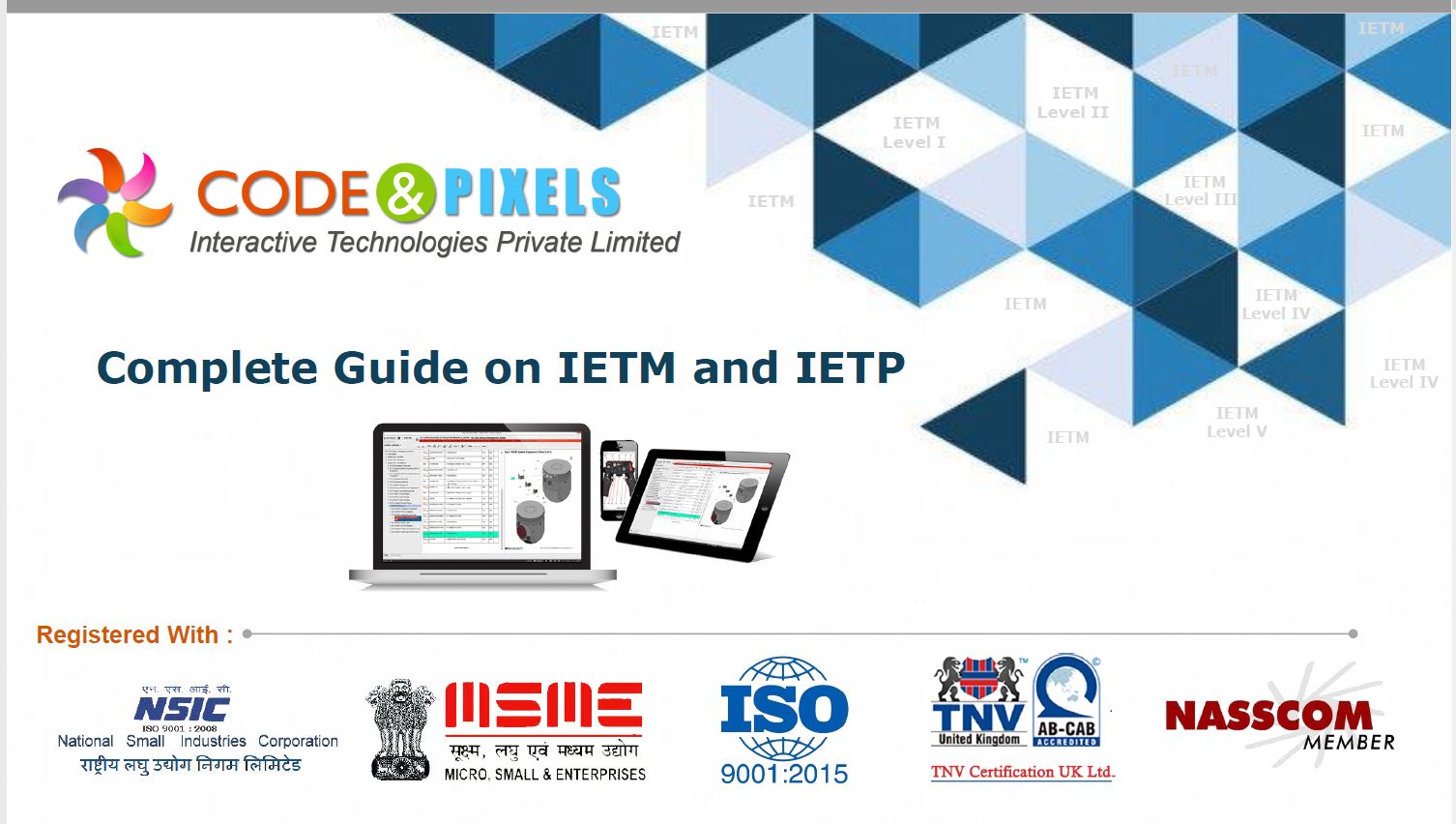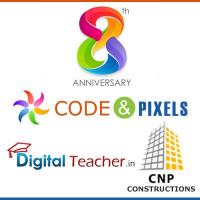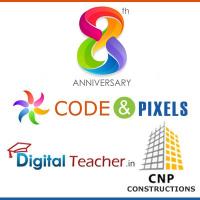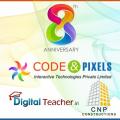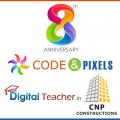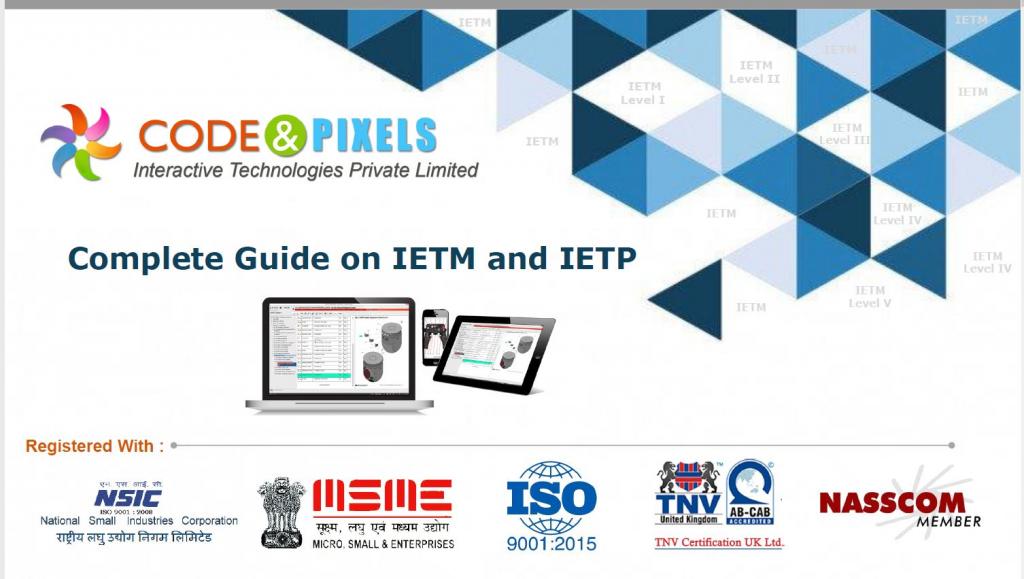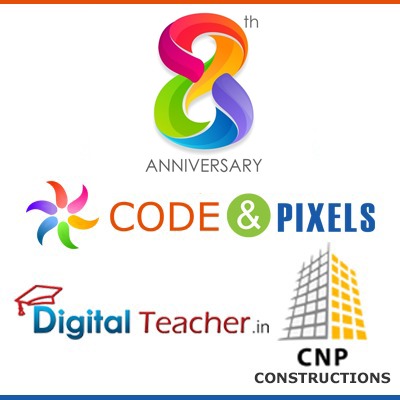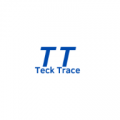Code And Pixels IETM
posted a blog.
(This Article on IETM has been written by (G.Gopi krishna from Code and Pixels, 7 years into IETM Service, and 20 years of overall IT experience)
IETM or Interactive electronic Technical Manual, as the name indicates, it is a Manual which is interactive and in the form of electronic/digital.
Then PDF file is also electronic/digital, will that be called IETM?
Yes, undoubtedly PDF is also IETM. It’s Level 2 IETM.
I need to give an example so that u can understand better about Levels. . Every one of us must have played digital games. In that, we need to cross various levels. The first level would be simple, the second little difficult, and 3rd level more challenging and 4th Level tough.
Question is, why this documentation is required?
Along with phone or vehicle or any household gadgets, we get a user manual because, in case we have any trouble while using, we can refer to the manual and resolve the issue, without connecting to OEM or service center as might not be available 24 X7.
Hence, these documents should be in simple language and easy to navigate, and easy to reach any point in few clicks.
The bigger the system/device the more pages are required and more variety of manuals are required. i.e. User manual, Operator manual, Maintainer manual, Spare list, and so on.
If some fault has occurred in the system, then the operator may need to refer to more than one manual and it is very difficult to refer to multiple hardcopies. Even it is not easy to refer to multiple PDFs and refer to the issue as there is no linkage between all PDFs.
The purpose of the Manual is to guide the operator. If the manual is more dynamic that will be easy for the operator to refer and resolve the issue.
Level 4 and to some extent Level 3 will be very handy and very fast. All the documents are converted to a database, hence searching and inter-document referring will become easier.
I.e. a user can search for a problem and easily reach that particular page in seconds and also can see all the related topics to that topic which is being displayed.
Simple is Level 1 and advanced is Level -4
LEVEL 1 - Normally scanned document Normal PDF file
LEVEL 2 - Basic PDF file with indexing, internal links between pages
LEVEL 3 - Intermediate HTML/XML based Software
LEVEL 4 - Advanced HTML/XML based software with advanced navigation features
Indian Defense wants all the equipment to be delivered along with IETMs since 2014.
Based on the complexity, Level 3 or Level 4 is asked in the RFQ document. Since 2018, mostly Level 4 is asked to deliver.
What is IETM is it a document similar to PDF?
IETM Levels 3 and 4 are not any document like MS Word or PDF file.
IETM is a combination of Software and database. All the manuals are converted to SQL database. Using IETM Viewer, the user can access the data i.e. manuals, drawings, images, etc.
IETM has 3 modes. User mode where users can access the documents. Admin mode where Admin can create users and track the activities of users
Super admin or Authoring tool, where all the manuals are converted to database using this authoring tool.
Standards :
IETMs are available in 2 standards
INDIAN Defense Standard (JSG 0852:2001)
European Aviation standard (S1000D)
INDIAN STANDARD :
Government of India, Ministry of defense has framed few standards, Joint service Guide 0852:2001 and reframed in 2007.
European Aviation standard : It is called S1000D, mainly used in the Aviation industry
If the RFQ or tender documents say it is IETM means, it’s Indian standard only. If the end-user wants S1000D, then specifically “S1000D IETM LEVEL -4†is mentioned.
What is the difference in both the standard?
Ultimately the purpose of both the standard is the same, easy accessibility to all the documents and key points in few clicks.
Indian Standard uses SQL Database and IETM Viewer to see the database. IETM Viewer has tools to navigate faster and most effectively.
IETM does not need any third-party software to run. OEM can edit using the authoring tool which is available in IETM software.
S1000d is very costly than the Indian standard.
Indian Standard is SQL based and HTML based and s1000d is XML based
Few companies convert Documents to XML and call them S1000D.
Simple XML is not an S1000D IETM. If the end-user /navy/shipowner does not have a CSDB studio then all these IETMs cannot be imported and made a single master IETM.
CSDB studio is very costly software and is mainly supplied by western counties. Indian version CSDBs is not compatible with original S1000d importing.
Call : 9849527706 or Mail : ( gopikrishna@codeandpixels )
For More details, Please Visit Our Site - codeandpixels.net
Be the first person to like this.
Code And Pixels IETM
posted a blog.
(This Article on IETM has been written by (G.Gopi krishna from Code and Pixels, 7 years into IETM Service, and 20 years of overall IT experience)
IETM or Interactive electronic Technical Manual, as the name indicates, it is a Manual which is interactive and in the form of electronic/digital.
Then PDF file is also electronic/digital, will that be called IETM?
Yes, undoubtedly PDF is also IETM. It’s Level 2 IETM.
I need to give an example so that u can understand better about Levels. . Every one of us must have played digital games. In that, we need to cross various levels. The first level would be simple, the second little difficult, and 3rd level more challenging and 4th Level tough.
Question is, why this documentation is required?
Along with phone or vehicle or any household gadgets, we get a user manual because, in case we have any trouble while using, we can refer to the manual and resolve the issue, without connecting to OEM or service center as might not be available 24 X7.
Hence, these documents should be in simple language and easy to navigate, and easy to reach any point in few clicks.
The bigger the system/device the more pages are required and more variety of manuals are required. i.e. User manual, Operator manual, Maintainer manual, Spare list, and so on.
If some fault has occurred in the system, then the operator may need to refer to more than one manual and it is very difficult to refer to multiple hardcopies. Even it is not easy to refer to multiple PDFs and refer to the issue as there is no linkage between all PDFs.
The purpose of the Manual is to guide the operator. If the manual is more dynamic that will be easy for the operator to refer and resolve the issue.
Level 4 and to some extent Level 3 will be very handy and very fast. All the documents are converted to a database, hence searching and inter-document referring will become easier.
I.e. a user can search for a problem and easily reach that particular page in seconds and also can see all the related topics to that topic which is being displayed.
Simple is Level 1 and advanced is Level -4
LEVEL 1 - Normally scanned document Normal PDF file
LEVEL 2 - Basic PDF file with indexing, internal links between pages
LEVEL 3 - Intermediate HTML/XML based Software
LEVEL 4 - Advanced HTML/XML based software with advanced navigation features
Indian Defense wants all the equipment to be delivered along with IETMs since 2014.
Based on the complexity, Level 3 or Level 4 is asked in the RFQ document. Since 2018, mostly Level 4 is asked to deliver.
What is IETM is it a document similar to PDF?
IETM Levels 3 and 4 are not any document like MS Word or PDF file.
IETM is a combination of Software and database. All the manuals are converted to SQL database. Using IETM Viewer, the user can access the data i.e. manuals, drawings, images, etc.
IETM has 3 modes. User mode where users can access the documents. Admin mode where Admin can create users and track the activities of users
Super admin or Authoring tool, where all the manuals are converted to database using this authoring tool.
Standards :
IETMs are available in 2 standards
INDIAN Defense Standard (JSG 0852:2001)
European Aviation standard (S1000D)
INDIAN STANDARD :
Government of India, Ministry of defense has framed few standards, Joint service Guide 0852:2001 and reframed in 2007.
European Aviation standard : It is called S1000D, mainly used in the Aviation industry
If the RFQ or tender documents say it is IETM means, it’s Indian standard only. If the end-user wants S1000D, then specifically “S1000D IETM LEVEL -4†is mentioned.
What is the difference in both the standard?
Ultimately the purpose of both the standard is the same, easy accessibility to all the documents and key points in few clicks.
Indian Standard uses SQL Database and IETM Viewer to see the database. IETM Viewer has tools to navigate faster and most effectively.
IETM does not need any third-party software to run. OEM can edit using the authoring tool which is available in IETM software.
S1000d is very costly than the Indian standard.
Indian Standard is SQL based and HTML based and s1000d is XML based
Few companies convert Documents to XML and call them S1000D.
Simple XML is not an S1000D IETM. If the end-user /navy/shipowner does not have a CSDB studio then all these IETMs cannot be imported and made a single master IETM.
CSDB studio is very costly software and is mainly supplied by western counties. Indian version CSDBs is not compatible with original S1000d importing.
Call : 9849527706 or Mail : ( gopikrishna@codeandpixels )
For More details, Please Visit Our Site - codeandpixels.net
Be the first person to like this.
Code And Pixels IETM
posted a blog.
Yesterday, We have received a call, “Can you develop IET Manuals for our System?â€, and we said Yes, We have been doing it for 8 years. Immediate question was, can you share 10 pages of the sample Interactive Electronic Technical Manual (IETM)?
IETM is a Software/ Web Application Having Database
We would like to clarify here that, of course, the IETM name indicates technical manual, but actually it is not any document i.e. PDF, MS Word, or another document format. It’s a software/Web Application where all the manuals are dynamically hyperlinked using an SQL database. You may call it a Web Application, Software having Database (SQL CSDB, Common Source DataBase)
As the name suggests, it’s interactive and used in electronic devices i.e. systems, PDAs, etc.
IETM Explained in Simple Terms
Not clear yet, let me put it in another way. When we purchase a Car, we get a user Hard copy of the manual has some 1000 pages. Similarly, when OEM (Original Equipment Manufacturer) delivers some big vehicle or machinery or systems having a lot of subsystems, then along with the Physical components, OEMs also delivers hard copies of manuals.
Hard copies may be related to the user manual, maintenance manual, troubleshooting, Operations, Man-machine Interface, etc. Then the volume of hard copies would reach 3000 per subsystem.
For large systems i.e. Missiles, Ships, Radars, etc will have the number of subsystems then OEMs have to give around 20,000 – 50,000 hard copies to Army/Navy/Airforce.
Along with hard copies OEMs also have to supply, Training Videos and Commuter based training, and soft copies of manuals(PDFs).
Now, when trouble arises, it’s really difficult to refer 30,000 pages and cross-refer few sections which are in separate hard copies in stipulated time.
How Interactive Electronic Technical Manual (IETM) is Being Used?
In this scenario, IETMs have evolved as saviors. IETMs are electronically combined and given hyperlinks. We may consider PDF files as Level 1, Indexed PDFs as Level 2, HTML Based indexed files will be considered as Level -3. Levels -1 and 2 or no more used as deliverables. Level -3 can be used when the pages are 3000 to 4000.
When pages are more than 25,000 then to access faster, the Database plays a major role. Content / all manuals are converted into the SQL database (CSDB – Common Source DataBase) and hierarchically organized with User management and content management and authoring functionalities
Levels Usage in Interactive Electronic Technical Manual (IETM)
The software that is used to manage thousands of pages is called IETM Level 4. Based on the complexity, the number of pages either Level 3 or Level 4 is used. Level -5 also exists with more functionality i.e. intelligent search, user activity tracking, and other advanced navigation features.
JSG – 0852:2001 is the Indian Standard of IETM and s1000d is the European standard of IETM
We are proud to be in association with Indian Defense. CODE AND PIXELS IETM Framework has been successfully used by Army, Navy, and Air force since 2013. We have empaneled vendors to supply software to DRDO, ASL, BDL, ECIL, and many other OEMs who supply systems and subsystems to various Indian Defense agencies.
Code and Pixels has developed Robust Framework and authoring tools and we have successfully executed 25 + IETMs design and Development projects
S1000D Developers
When Navy/IAF/Army wants s1000d IETM, it is implied that the navy has CSDB Suit /Local CSDB Server
20- 50 OEMs or Service providers will give S1000d data Modules of various systems and the Navy CSDB Local server will host them and monitor them and does the user management
If the navy does not have a CSDB suit then, still they can run IETM, but a standalone version where no user management will be done by IETM Viewer.
(User management will be done by Navy CSDB Local server which hosts all the data modules of various OEMs)
If you are OEM and navy has asked you for S1000d, then ask them that being an OEM you will give s1000d XML files. Where will they host them? do they have CSDB Server to host the files? Are they planning for CSDB Server in the future?
User administration and management, course allocation is done from CSDB Server only
if they don’t have a CSDB server, still they can View S1000D, but in standalone mode (IETM Viewer)
Advatages of Interactive Electronic Technical Manual (IETM)
A major advantage of s1000d is, let us say each ship is built by has 50 OEMs and all 50 OEMs supply IETMS in different formats, then it will be difficult to maintain uniformity.
If all 50 vendors give navy s1000d IETMs then all the IETMs will almost in a similar format.
To achieve this, the Navy must have an S1000d CSDB server with them to host all OEMs received by various vendors.
If the Navy does not have an S1000d CSDB Server with them, then the purpose and benefits of S1000d cant be achieved
Definitely, S1000d has Advantage if the navy has an S1000d CSDB Server, otherwise, it’s equivalent to seeing files in IETM Level 3 viewer.
Visit – https://www.codeandpixels.net now!
We hope you liked this article. Follow our blog for more such content.
Be the first person to like this.
Code And Pixels IETM
posted a blog.
What is S1000D?
S1000D is the European standard of technical publications or technical documentation being followed in Aerospace since 1980, which uses CSDB, a Common source database which is used for preparing, managing, and publishing technical information for a warship, or Aerospace, or even Civil airlines too.
The first release of the S1000D Specification was in 1989 and in August 2019 the latest 5 Issue was release
An airplane or ship is built with thousands of components, sub-components and navigation equipment, and many more. Hence, these components are supplied by many OEMs (Original equipment manufacturers). OEMs make the documents to their own standards. Each document and format is entirely different because all OEMs don’t maintain similar standards. At that point, the Technical Publications Specification Maintenance Group (TPSMG) was formed. They proposed a DM-based (Data Module) Based structure. TO manage these Data modules CSDB was maintained. (Database). Data Module is the standalone section of the document. For example, let’s assume that one data module is prepared on Operation of GPS and stored in CSDB, then whenever GPS operations are to be reproduced for different aircraft or different systems, simply that Data module can be copied and plugged.
In short, re-usability and the format used is XML, and tags are defined by the S1000D steering committee.
S1000D Basic Principle
Content or data produced following the standard is in Data Module
This data module is the smallest and self-contained content or data unit within a technical publication
A data module must have sense and meaning when viewed without any supporting data other than images and diagrams
These data modules will be stored and managed in CSDB, Common Source Database.
Using this CSDB we can publish output in a page-oriented or Interactive Electronic Technical Manual.
These Individual data modules are re-usable components and can be used repeatedly in an output.
Benefits of S1000D
Re-usability of data hence reduces production cost
Standardization of data and naming conventions
Open source and non-proprietary
Good for legacy data conversion
Proper documentation and version control management
Zero printing cost and zero occupancies of space as no Hard copies are to be maintained. Achieved by reusing instead of recreating information each time it is required
Easily to maintain and distribute: Facilitates transfer of information and electronic output between systems very easily and conveniently
Multiple Vendor support
Fastest reference to operator or maintainer than traditional paper-based documents
Many different output forms can be generated from a single data source i.e. from CSDB we can generate IETM and also PDF format which can be used for printing if need be
Customized Output creation: Allows sub-sets of information to be generated to meet specific user needs and user levels.
S1000D USERS
Military
Air
Land
Maritime
International
Civil/commercial
Aviation
Shipping
Space
Urban
General technology
Others:
Manufacturer
Integrator
Supplier
Suppliers of documentation
Technical service providers
Software vendors
Common information sets provide following data: –
Crew/Operator information
Description and operation
Maintenance information
Wiring data
Illustrated Part Data (IPD)
Maintenance planning information
Mass and balance information
Recovery information
Equipment information
Weapon loading information –
Cargo loading information
Stores loading information
Role change information
Battle damage assessment and repair information
Illustrated tool and support equipment data
Service bulletins
Material data
Common information and data
Training
List of applicable publications
Maintenance checklists and inspections
S1000D Development with Code and Pixels
Having 8 years of experience in handling technical documentation, especially for defense, code and pixels has gained good knowledge on S1000D IETM development
Code and Pixels is associated with US based company in designing and development of S1000d documentation.
Code and pixels has well trained 50 + resources to handle S1000d projects.
Visit – https://www.codeandpixels.net now!
We hope you liked this article. Follow our blog for more such content.
1 person likes this.
